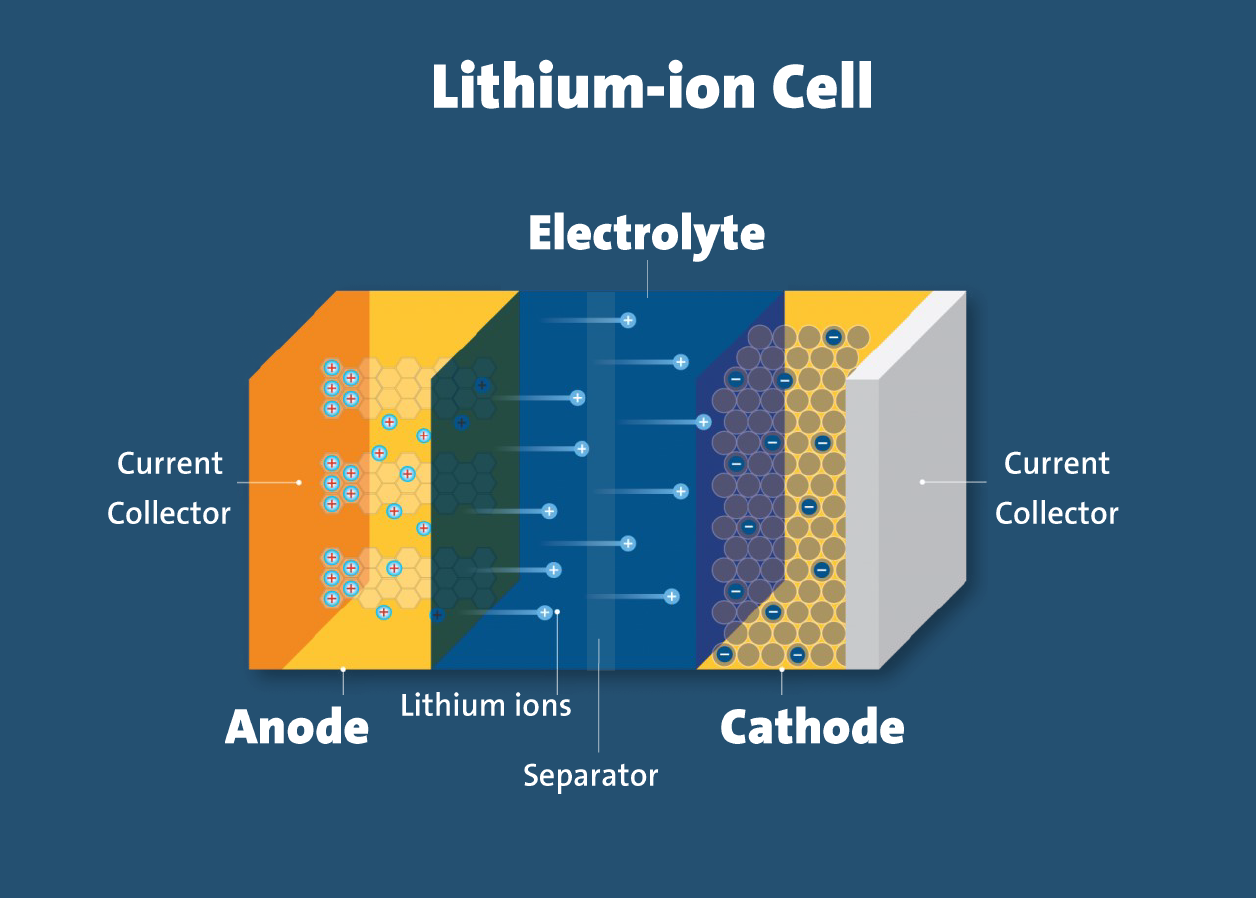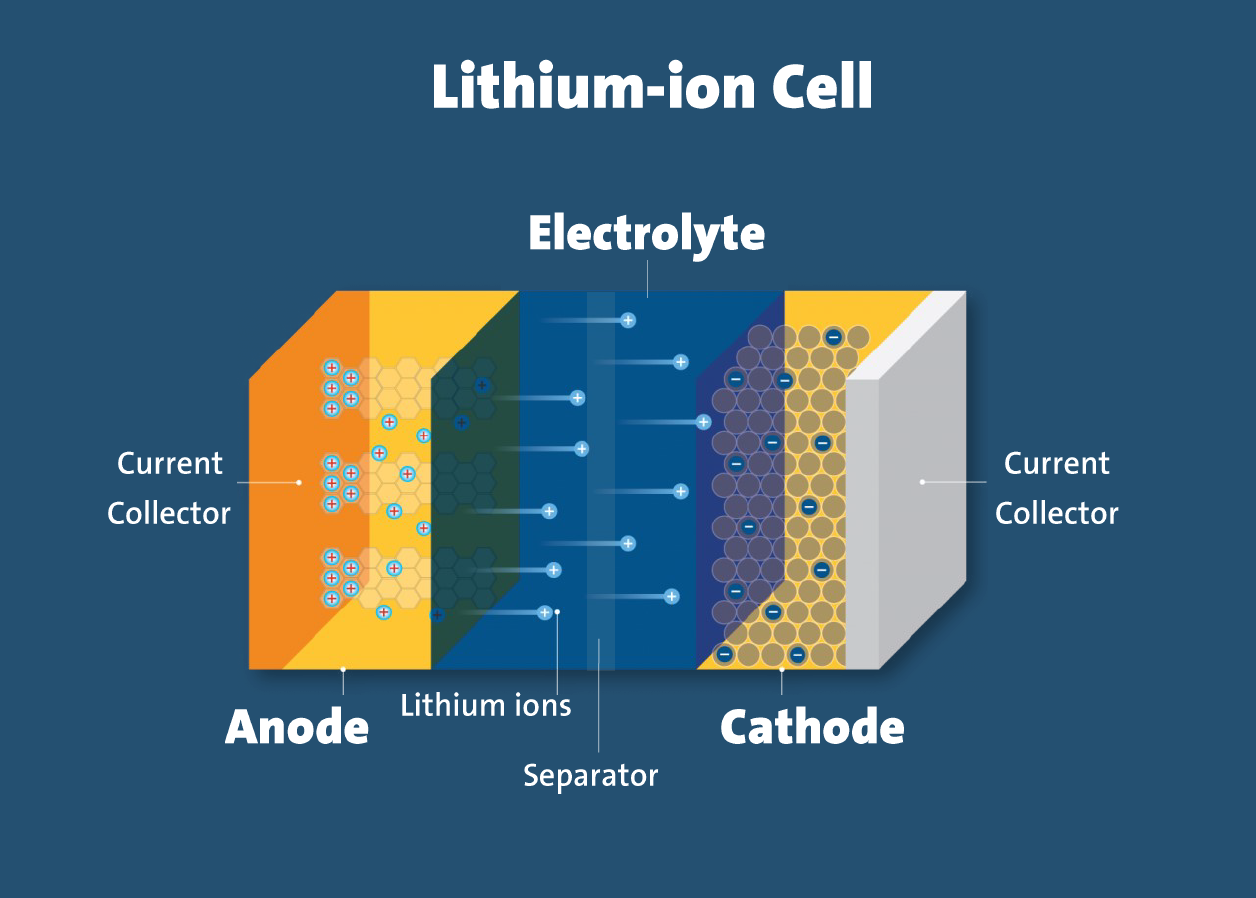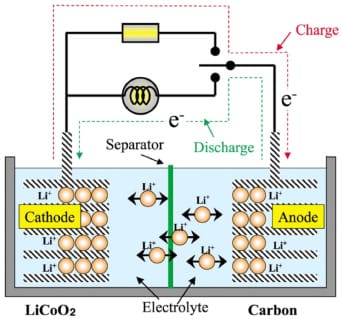How Lithium-ion Batteries Drive Electric Vehicles.
This compact powerhouse is responsible for storing and delivering the energy needed to propel EVs, offering a glimpse into a greener automotive landscape. But how exactly does this marvel of modern engineering work?


In the quest for a sustainable future, electric vehicles (EVs) have emerged as frontrunners, promising cleaner transportation with reduced emissions.
At the heart of these vehicles lies a revolutionary technology: the lithium-ion battery.
This compact powerhouse is responsible for storing and delivering the energy needed to propel EVs, offering a glimpse into a greener automotive landscape. But how exactly does this marvel of modern engineering work?
Read: Lithium-ion battery, how does it work?
The Anatomy of a Lithium-ion Battery
To understand the workings of a lithium-ion battery, it's essential to delve into its components.
At its core, a lithium-ion battery comprises three main parts: the cathode, the anode, and the electrolyte.
- Cathode: This is the positive electrode of the battery. In most lithium-ion batteries, the cathode is composed of lithium cobalt oxide (LiCoO2), although variations exist with different materials such as lithium iron phosphate (LiFePO4). The cathode stores lithium ions during charging and releases them during discharging.
- Anode: On the flip side is the negative electrode, known as the anode. Typically made of graphite, the anode also serves as a host for lithium ions during charging and releasing them during discharging.
- Electrolyte: Acting as the medium for lithium-ion transport, the electrolyte is a conductive solution that allows lithium ions to move between the cathode and the anode during charge and discharge cycles. It's usually a lithium salt dissolved in a solvent, commonly a mixture of organic carbonates.
Related: Future of electric vehicles and Lithium-ion batteries.

The Charging Dance: How Lithium-ion Batteries Store Energy
Charging an EV is akin to filling a tank with gasoline, albeit with electrons instead of liquid fuel.
When you plug your EV into a charging station, electricity flows from the grid into the battery.
This electricity enters the battery through the cathode, causing lithium ions to migrate towards the anode through the electrolyte, where they are stored.
The process involves a chemical reaction at both electrodes.
At the cathode, lithium ions are stripped of electrons, becoming positively charged and migrating towards the anode.
Meanwhile, at the anode, the lithium ions are received, and electrons are released into the external circuit, creating an electric current that powers the vehicle or stores energy for later use.
Read: Lithium-based batteries could make electric vehicles cheaper
Unleashing Power: How Lithium-ion Batteries Drive Electric Vehicles
When you press the accelerator of an electric vehicle, you're essentially tapping into the stored energy within the lithium-ion battery.
This triggers the reverse process of what occurs during charging. The lithium ions move from the anode to the cathode, releasing energy in the form of electrical current to power the vehicle's motor.
As the electrons flow from the anode through the external circuit to the cathode, they generate the electric current needed to drive the motor, propelling the vehicle forward.
This process continues until the battery's charge is depleted, at which point, it requires recharging to repeat the cycle.
Read: Lithium And The Booming EV Industry

The Advantages of Lithium-ion Batteries in Electric Vehicles
Lithium-ion batteries have become the preferred choice for EVs due to several advantages:
- High Energy Density: Lithium-ion batteries offer a high energy density, meaning they can store a large amount of energy in a relatively small and lightweight package. This characteristic is crucial for EVs, as it allows them to achieve longer driving ranges without significantly increasing the size or weight of the battery pack. Higher energy density also means more efficient use of space within the vehicle, maximizing passenger and cargo room.
- Fast Charging: Compared to other types of batteries, such as lead-acid or nickel-metal hydride, lithium-ion batteries can be charged at a faster rate. Rapid charging capabilities are essential for EV drivers, as they reduce the time required to recharge the vehicle and increase convenience, making electric vehicles more practical for everyday use. The ability to recharge quickly also enhances the flexibility of EVs, allowing drivers to top up their batteries during short breaks or on longer journeys.
- Long Cycle Life: Lithium-ion batteries typically have a longer cycle life compared to traditional battery chemistries. A cycle refers to one complete charge and discharge cycle of the battery. Lithium-ion batteries can withstand a higher number of charge and discharge cycles before experiencing significant degradation in performance. This longevity is advantageous for EV owners, as it means they can expect their batteries to maintain their capacity and performance over an extended period, reducing the need for frequent battery replacements and lowering the total cost of ownership.
- Lower Maintenance: Lithium-ion batteries require minimal maintenance compared to other types of batteries. They have fewer moving parts and no fluids to replenish, resulting in lower maintenance requirements for EV owners. This not only reduces the hassle and inconvenience associated with battery maintenance but also helps to decrease the overall operating costs of electric vehicles. With less time and money spent on maintenance, EV owners can enjoy a hassle-free driving experience.
- Environmental Impact: Lithium-ion batteries have a lower environmental impact compared to conventional internal combustion engine vehicles. By powering vehicles with electricity instead of gasoline or diesel, EVs produce zero tailpipe emissions, reducing air pollution and greenhouse gas emissions. Additionally, the materials used in lithium-ion batteries are recyclable, allowing for the recovery of valuable metals such as lithium, cobalt, and nickel. Recycling helps to conserve natural resources, reduce waste, and minimize the environmental footprint of electric vehicles over their lifecycle.
Read: The decline in the price of Lithium makes Electric cars affordable.

Conclusion
Lithium-ion batteries represent a pivotal advancement in the realm of electric vehicles, providing the energy storage solution needed to power the transportation of the future.
With their high energy density, fast charging capabilities, and long cycle life, lithium-ion batteries are driving the widespread adoption of EVs, paving the way for a cleaner, more sustainable automotive industry.
As technology continues to evolve, the future looks brighter than ever for electric mobility, powered by the innovation and efficiency of lithium-ion batteries.
See: The Power Behind Electric Mobility: Unraveling the Mechanics of Lithium Batteries.




